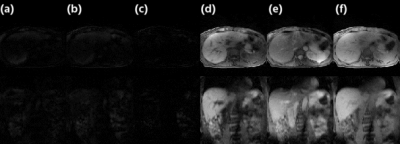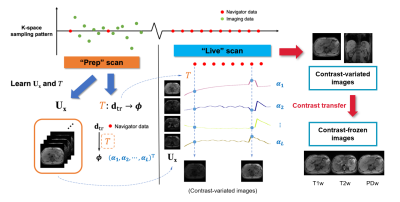Pei Han1,2, Junzhou Chen1,2, Fei Han3, Zhehao Hu1,2, Debiao Li1,2, Anthony G. Christodoulou1,2, and Zhaoyang Fan1,4
1Biomedical Imaging Research Institute, Cedars-Sinai Medical Center, Los Angeles, CA, United States, 2Department of Bioengineering, UCLA, Los Angeles, CA, United States, 3Siemens Medical Solutions USA, Inc., Los Angeles, CA, United States, 4Departments of Radiology and Radiation Oncology, University of Southern California, Los Angeles, CA, United States
1Biomedical Imaging Research Institute, Cedars-Sinai Medical Center, Los Angeles, CA, United States, 2Department of Bioengineering, UCLA, Los Angeles, CA, United States, 3Siemens Medical Solutions USA, Inc., Los Angeles, CA, United States, 4Departments of Radiology and Radiation Oncology, University of Southern California, Los Angeles, CA, United States
A new technique called SPIDER is proposed for real-time multi-contrast 3D imaging. With the information learned and stored in the “Prep” scan, 3D multi-contrast images can be generated in the "Live" scan with simple matrix multiplication, which yielding a latency of 50ms or less.

Figure 3: Comparison of images
from Multitasking reconstruction (reference) and the proposed SPIDER method.
From left to right: (a) Reference
from Multitasking reconstruction; (b) Contrast-variated SPIDER
real-time images; (c) Difference between (a) and (b); (d-f) Contrast-frozen
T1w, T2w, and PDw SPIDER real-time images.

